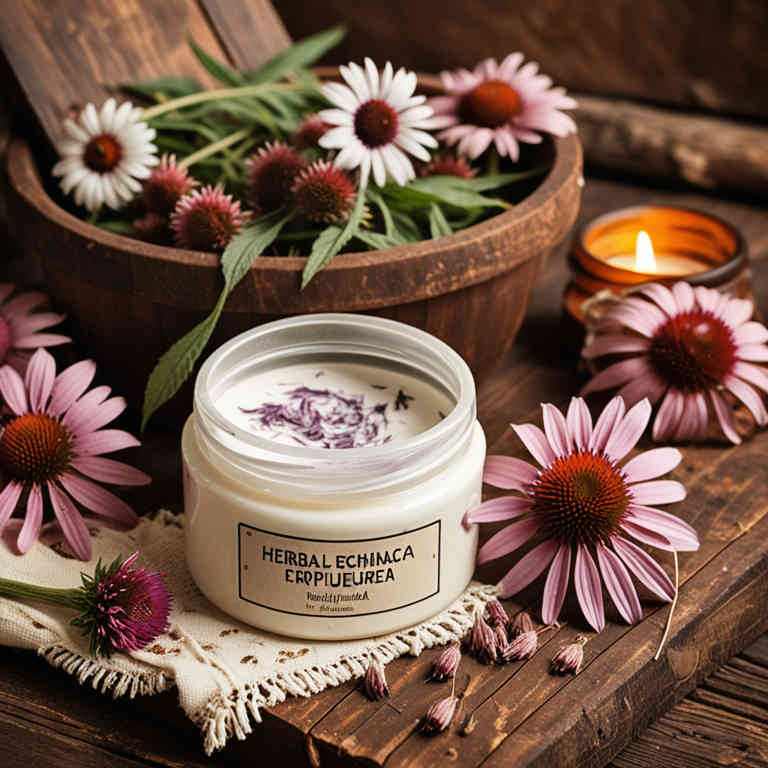Echinacea purpurea cream for medicinal use

Echinacea purpurea cream is a topical herbal preparation made from the extract of the purple coneflower plant.
It is commonly used in herbalism to support the immune system and alleviate symptoms of colds and respiratory infections. The cream may help reduce inflammation and soothe skin irritations due to its anti-inflammatory and antimicrobial properties. It is often applied directly to the skin for localized relief.
In traditional herbal practice, it is valued for its potential to boost immunity and promote healing.
Uses
Echinacea purpurea cream has been used to support immune health and alleviate symptoms of skin irritations and infections.
Historically, Native American tribes utilized echinacea for treating various ailments, including infections, wounds, and inflammation. Traditionally, the plant was prepared as a tea or tincture, but modern formulations now include creams for topical application. In contemporary usage, echinacea cream is often applied to reduce redness, swelling, and discomfort associated with minor skin conditions.
It is also believed to enhance the body's natural defenses against viral and bacterial infections.
Benefits
Echinacea purpurea cream has health benefits such as boosting the immune system and reducing inflammation.
It is commonly used to alleviate symptoms of colds and respiratory infections due to its antimicrobial properties. The cream may also help soothe skin irritations and promote healing by enhancing the body's natural defenses. Its active compounds, such as alkamides and polysaccharides, contribute to its therapeutic effects.
Regular use of Echinacea purpurea cream can support overall wellness and potentially shorten the duration of minor illnesses.
Constituents
Echinacea purpurea cream active constituents include alkamides, caffeic acid derivatives, and polysaccharides.
These compounds are known for their immune-boosting properties and anti-inflammatory effects. Alkamides interact with the immune system to enhance its response to infections. Caffeic acid derivatives have antioxidant and antimicrobial properties.
Polysaccharides stimulate the production of white blood cells, supporting the body's defense mechanisms.
Preparation
To make Echinacea purpurea cream, start by gathering fresh or dried Echinacea purpurea flowers and leaves.
Crush the plant material to release its active compounds, then simmer it in a mixture of water and a mild oil, such as coconut or jojoba oil, for about 30 minutes. Strain the liquid to remove the plant solids, and allow the infused oil to cool.
Finally, mix the cooled infused oil with beeswax and a small amount of distilled water to create a stable, smooth cream consistency.
Side Effects
Echinacea purpurea cream may lead to allergic reactions in some individuals, particularly those with a history of allergies to plants in the Asteraceae family, such as ragweed.
It can also cause skin irritation, redness, or a burning sensation at the application site. Some people may experience gastrointestinal discomfort if the cream is absorbed through the skin in significant amounts. In rare cases, it may interact with certain medications, especially those affecting the immune system.
It is important to consult a healthcare provider before using this preparation, especially for individuals with pre-existing skin conditions or chronic illnesses.